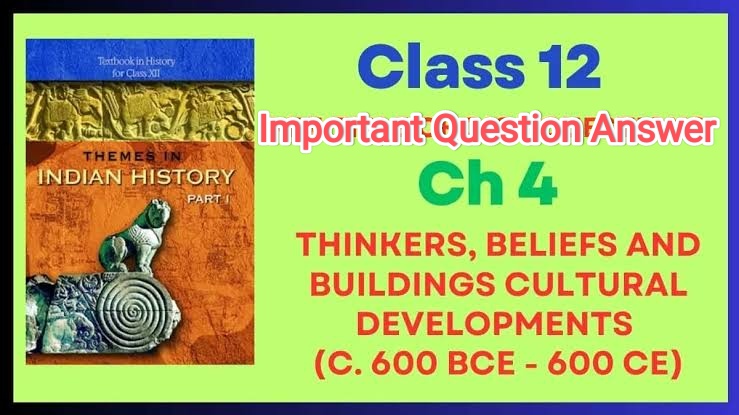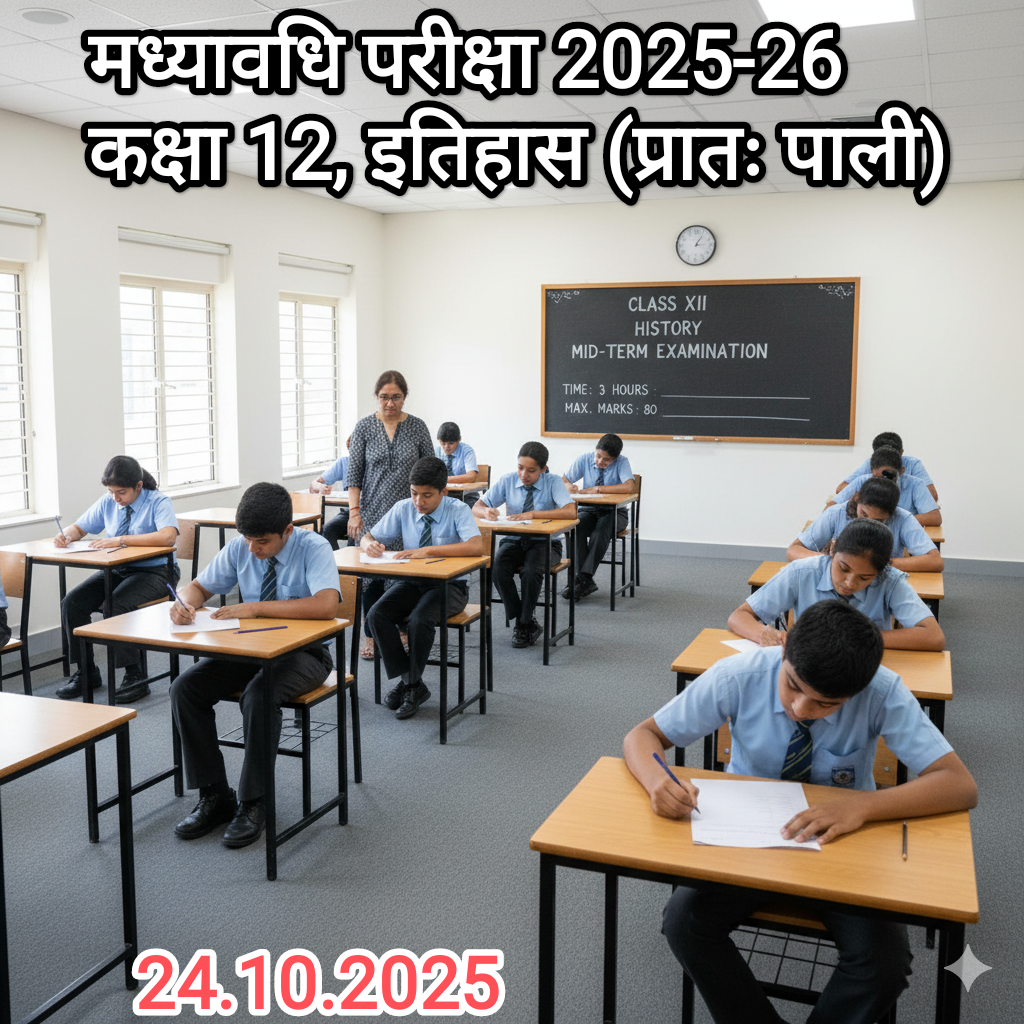✅ 3-MARK QUESTIONS WITH ANSWERS (80–100 words)
Q1. Explain the role of the Begums of Bhopal in preserving the Sanchi Stupa.
Ans: The Begums of Bhopal, particularly Shahjehan Begum and Sultan Jahan Begum, played a vital role in preserving the Sanchi Stupa in the 19th–20th centuries. They funded the building of a museum, supported archaeological excavations, and financed the repair and conservation work. Their efforts brought attention to the neglected monument, which later received national and international recognition. Their patronage reflected a commitment to heritage conservation beyond religious lines.
Q2. What were the major teachings of Mahavira?
Ans: Mahavira emphasized non-violence (Ahimsa), truth (Satya), non-stealing (Asteya), celibacy (Brahmacharya), and non-possession (Aparigraha). He taught that karma binds the soul and only through self-discipline, asceticism, and ethical living can one attain moksha (liberation). He rejected the authority of the Vedas and emphasized equality, making his teachings accessible to all, regardless of caste or gender.
Q3. What is the significance of Sanchi Stupa in understanding Buddhist art and architecture?
Ans: Sanchi Stupa is a remarkable example of early Buddhist architecture. It reflects Buddhist symbolism and art through its elaborate gateways, railings, and stone carvings based on Jataka tales. It also helps historians understand patronage patterns, religious practices, and community participation in religious life. The structure shows symbolic representation instead of idol worship and marks the evolution of Buddhist architecture.
Q4. Why is the mid-first millennium BCE often regarded as a turning point in world history?
Ans: The mid-first millennium BCE saw the emergence of critical philosophical and religious traditions across regions. In India, thinkers like Buddha and Mahavira challenged ritualistic orthodoxy and proposed ethical, rational paths to salvation. Globally, similar movements occurred in Greece (Socrates), China (Confucius, Laozi), and Iran (Zoroaster). This period witnessed urban growth, socio-political changes, and increased intellectual questioning, marking a major shift in human thought.
Q5. What were the main differences between the Hinayana and Mahayana sects of Buddhism?
Ans:
- Hinayana emphasized personal salvation, followed the original teachings of Buddha, and did not believe in idol worship.
- Mahayana allowed idol worship and believed in Bodhisattvas helping others attain salvation.
- Mahayana was more inclusive and spread widely across Asia, whereas Hinayana remained more orthodox and localized.
Q6. What do you understand by the term ‘Bodhisattva’?
Ans:
- Bodhisattvas are beings who postpone their own nirvana to help others attain enlightenment.
- They are central to Mahayana Buddhism.
- Avalokiteshvara and Maitreya are famous Bodhisattvas worshipped across Asia.
Q7. Describe any three contributions of Ashoka towards the spread of Buddhism.
Ans:
- Ashoka sent missionaries to Sri Lanka, Central Asia, and Southeast Asia.
- He built stupas, viharas, and supported Buddhist monks.
- His edicts spread Buddhist values like compassion, non-violence, and tolerance.
Q8. Discuss the contributions of John Marshall in the preservation of Sanchi Stupa.
Ans:
- John Marshall was the Director-General of ASI (1902–1928) who led major excavations at Sanchi.
- He initiated the restoration and conservation of the Stupa and its gateways.
- He promoted public interest in Indian heritage through scholarly publications and reports.
Q9. Write a short note on the importance of the Jataka Tales in understanding Buddhism.
Ans:
- Jataka Tales are stories of Buddha’s previous births that teach moral lessons.
- They reflect Buddhist values like compassion, honesty, and sacrifice.
- These tales are depicted in stupa carvings, especially at Sanchi and Bharhut.
Q10. Describe the significance of the gateways (toranas) of the Sanchi Stupa.
Ans:
- The toranas are elaborately carved with Jataka tales and scenes from Buddha’s life.
- They symbolically represent Buddha through motifs like lotus, wheel, and Bodhi tree.
- The gateways show a blend of artistic skill and religious symbolism.
Q11. Why are Buddhist stupas called “stories in stone”? (CBSE 2016)
Ans:
- Stupas are decorated with sculptures narrating Jataka tales and Buddha’s life.
- The carvings convey moral and spiritual messages visually.
- They serve as pictorial history books, preserving oral traditions in stone.
Q12. How was Buddha’s presence symbolized through art? Give two examples. (CBSE 2010)
Ans:
- Empty throne symbolizes Buddha’s renunciation.
- Bodhi tree represents his enlightenment.
- Dharma Chakra (Wheel of Law) signifies his first sermon.
Q13. Mention any two sources used to learn about Buddha and his teachings. (CBSE 2008)
Ans:
- Tripitakas – Buddhist scriptures in Pali.
- Jataka tales – Stories of Buddha’s previous lives.
- Archaeological remains – like stupas, inscriptions, and sculptures.
Q, 14. What was the fate of the Amaravati Stupa compared to Sanchi? (CBSE 2016)
Ans:
- The Amaravati Stupa was neglected and dismantled over time.
- Its remains were taken away by British officials and collectors.
- In contrast, Sanchi was preserved and restored, especially due to Bhopal Begums and ASI.
Q20. What is the significance of the toranas at Sanchi? (CBSE 2017)
Ans:
- Toranas are the main decorative features of the stupa.
- They depict Buddhist narratives and symbolism through carvings.
- They reflect artistic excellence and the spiritual ethos of early Buddhism.
Sanchi stup
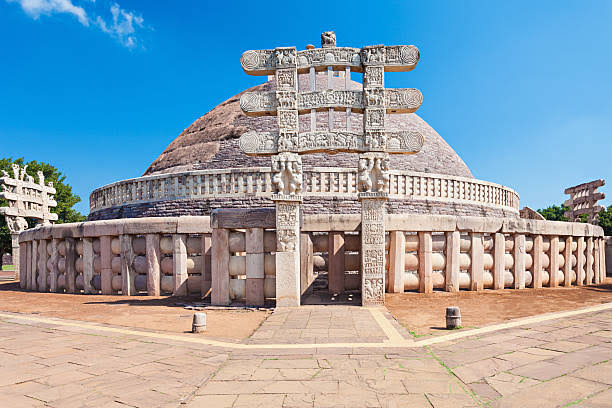
Q22. Describe the basic structure of a Buddhist Stupa.
Ans:
- Anda (dome): Symbolizes the mound where relics are kept.
- Harmika: Square railing on top of the dome.
- Chattra: Central pillar with triple umbrella signifying high rank.
- Pradakshina Patha: Circumambulatory path around the stupa.
Q23. Who were the Tirthankaras?
Ans:
- Tirthankaras were spiritual teachers in Jainism.
- They attained liberation and showed the path to others.
- There were 24 Tirthankaras, with Mahavira being the 24th.
Jain Tirthankaras
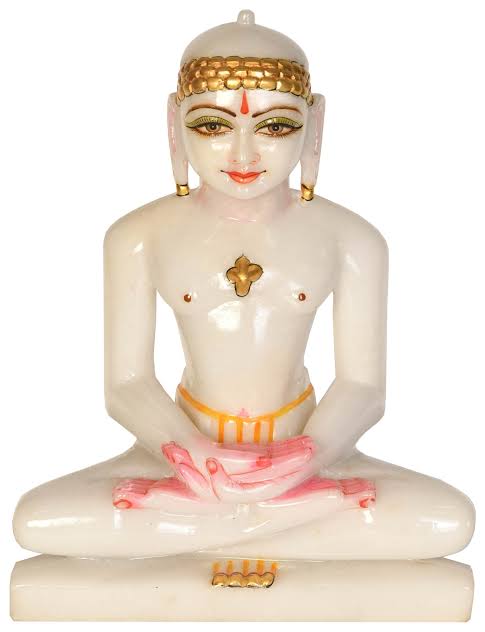
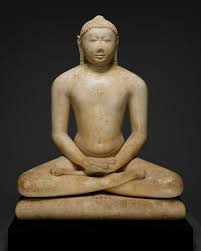
8-MARK QUESTIONS WITH POINT-WISE ANSWERS
Q1. Explain the main teachings of the Buddha. How did he explain the path of liberation?
Ans:
- Life is full of suffering (dukkha) – caused by desire and attachment.
- Cause of suffering is craving (tanha) – wanting worldly pleasures and possessions.
- End of suffering is possible by overcoming desire.
- Eightfold Path (Ashtangik Marg) is the way to liberation.
- Emphasized ethical living, meditation, and wisdom.
- Rejected the authority of the Vedas and caste system.
- Believed in karma and rebirth, but stressed mental discipline.
- Taught in Prakrit (Pali) for wider understanding among common people.
Q2. What are the differences and similarities between the ideas of Jainism and Buddhism?
Ans:
- Common origin: Both arose in 6th century BCE as reform movements.
- Both rejected Vedic rituals, caste discrimination, and priestly dominance.
- Jainism believes in extreme asceticism, Buddhism advocates a middle path.
- Ahimsa is central to both, but Jainism is more rigid about non-violence.
- Buddha denied the existence of a soul (anatma); Jainism believes in atma.
- Buddhism accepted moderate lifestyle; Jainism promoted renunciation.
- Language: Both used Prakrit or Pali, not Sanskrit.
- Women and lower castes were given spiritual equality in both.
Q3. Discuss the contribution of Buddhist literature and architecture in understanding the cultural life of ancient India.
Ans:
- Tripitakas contain Buddha’s sermons, monastic rules, and philosophy.
- Jataka tales reveal values, customs, and moral life of people.
- Texts written in Pali and Prakrit reflect linguistic trends.
- Stupas, viharas, and chaityas provide insights into religious practices.
- Carvings and symbols show artistic skills and belief systems.
- Help understand gender roles and social norms in ancient times.
- Reflect the role of royal and lay patronage in religious life.
- Show spread of Buddhism across India and Southeast Asia.
Q4. Describe the historical significance of Sanchi Stupa as a source of history. Also discuss the efforts made to preserve it.
Ans:
- It is one of the oldest stone structures in India.
- Built by Ashoka in the 3rd century BCE; reflects Mauryan patronage.
- Rich carvings depict Jataka tales and life events of Buddha.
- Reflects symbolic representation instead of anthropomorphic images.
- Shows architectural elements: dome, railings, toranas, pradakshina patha.
- Discovered in 1818, restored by John Marshall and ASI.
- Begums of Bhopal supported its preservation.
- Declared a UNESCO World Heritage Site, reflects shared cultural heritage.
Q5. Discuss the role of patrons in the building of religious structures in ancient India with special reference to the Sanchi Stupa.
Ans:
- Royal patrons like Ashoka financed the building of stupas.
- Merchants and guilds also contributed donations.
- Inscriptions on railings at Sanchi mention donors’ names, including women.
- Patronage reflected social responsibility and religious merit.
- Donations often commemorated personal milestones or family events.
- Some patrons gave for popular visibility and respect.
- Community involvement led to shared spiritual spaces.
- The Sanchi Stupa stands as an example of collective patronage.
Q6. Critically examine the limitations of using Buddhist texts to reconstruct the religious history of India.
Ans:
- Buddhist texts were compiled centuries after Buddha’s death.
- Idealized versions of events often dominate narratives.
- Sectarian biases (Theravada vs Mahayana) affect accuracy.
- Texts may ignore or distort rival religious views.
- Focus more on monks’ lives than laypeople.
- Language limitations: texts mainly in Pali and Sanskrit, excluding others.
- Some are mythological rather than historical (e.g., Jataka tales).
- Need to be cross-verified with archaeological evidence for accuracy.
GAUTAM BUDHA
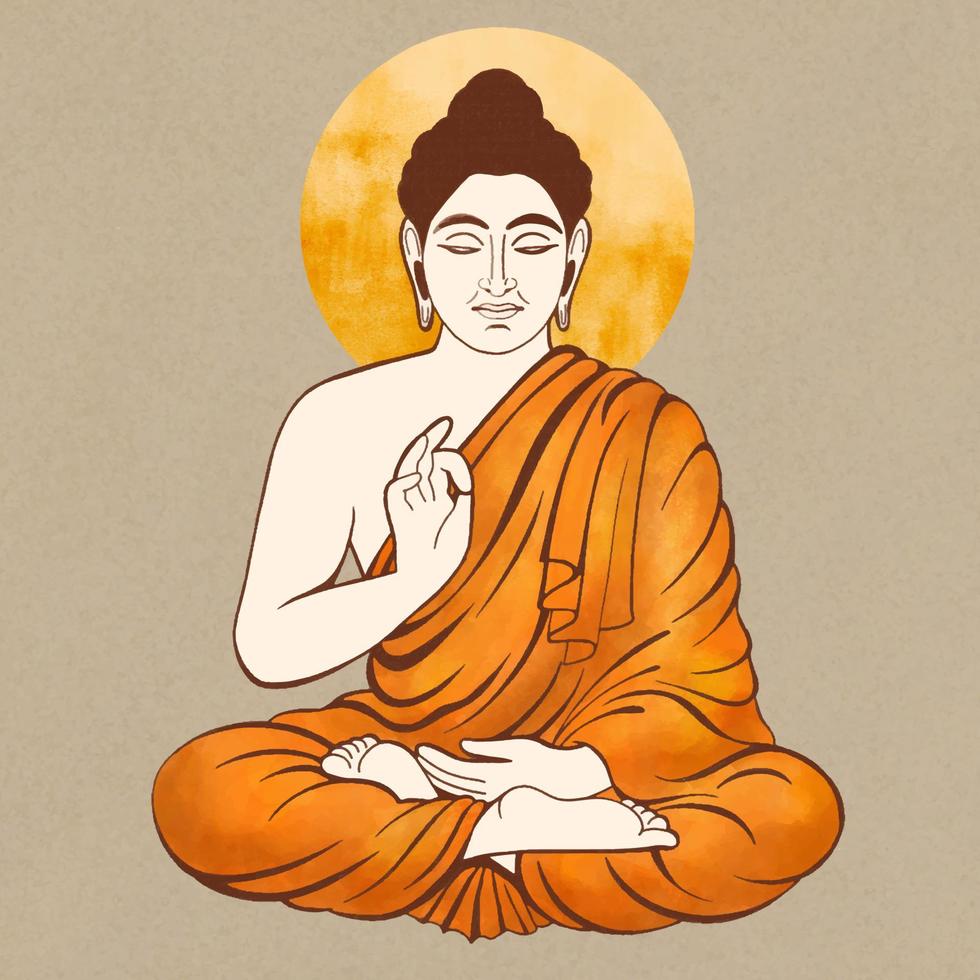
Q7. Explain how Buddhist ideas and symbols were represented in sculpture. With examples, describe the features of the Sanchi Stupa.
Ans:
- Buddha depicted symbolically – e.g., lotus, wheel, tree, footprints.
- Sanchi carvings include scenes from Jataka tales.
- Toranas show events like birth, enlightenment, first sermon, death.
- Pradakshina patha used for ritual worship.
- The stupa dome (Anda) represents the cosmic mound.
- Harmika and chattra indicate sacred space and honor.
- Use of local artisans shows regional artistic involvement.
- Entire stupa acts as a “story in stone” for non-literate devotees.
Q8. How do archaeological sources help us understand the religious life of early India? Explain with reference to Sanchi Stupa.
Ans:
- Monuments like Sanchi Stupa show religious architecture and artistic symbolism.
- Stupa carvings depict scenes from Buddha’s life and Jataka tales.
- Inscriptions on railings mention donors, revealing patronage patterns.
- Layouts of stupas and viharas reflect ritual practices like circumambulation.
- Absence of images of Buddha shows symbolic representation.
- Material used (stone, terracotta) indicates economic and technological context.
- Artifacts found nearby give insight into monastic and lay life.
- Help historians reconstruct beliefs, rituals, and daily religious practices.
Q9. Describe the efforts of various individuals and groups to preserve historical monuments like Sanchi Stupa. What do these efforts tell us about the value placed on heritage?
Ans:
- Sanchi was rediscovered in 1818 by British officials.
- Early explorers took away sculptures to museums.
- Begums of Bhopal funded protection and construction of pathways/museum.
- John Marshall (ASI) led scientific restoration in the early 20th century.
- Conservation involved local and foreign scholars.
- Preservation shows cultural pride and historical awareness.
- Modern India treats Sanchi as a national and global heritage site.
- These efforts show a deep respect for ancient art, religion, and identity.
Q10. Explain how Buddhist literature like Tripitakas and Jataka tales are useful in reconstructing the life and teachings of the Buddha.
Ans:
- Tripitakas record Buddha’s sermons, rules, and philosophy.
- Vinaya Pitaka details monastic rules and organization.
- Sutta Pitaka contains discourses of the Buddha.
- Abhidhamma Pitaka discusses metaphysical and philosophical ideas.
- Jataka tales present moral lessons and Buddha’s past lives.
- Provide information about ethics, society, economy, and belief systems.
- Show how Buddhism evolved from oral to written tradition.
- Help reconstruct historical Buddha and early Buddhist community.
Q11. How did debates and discussions help in shaping the traditions of Buddhism and Jainism in India?
Ans:
- Six schools of thought flourished in 6th century BCE; debates were common.
- Public discussions were held in halls (kutagarashala) in cities like Rajagriha.
- Buddha and Mahavira encouraged questioning and reasoning.
- Enabled spread of rational, ethical ideas over ritualism.
- Created clear doctrines and monastic rules through dialogue.
- Promoted spiritual egalitarianism, attracting diverse followers.
- Facilitated the formation of sects like Mahayana, Hinayana, etc.
- Ensured adaptability and continuity of these traditions over centuries.
Dharmchakra praverdhan
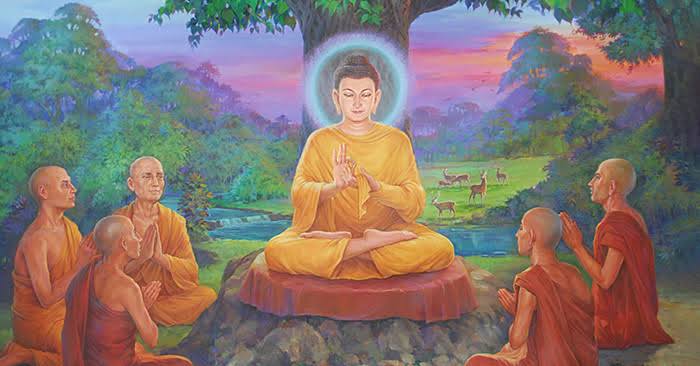
Q12. Describe the historical significance of the Sanchi Stupa. Also discuss efforts to preserve it. (CBSE 2010, 2014)
Ans:
- Sanchi is one of the oldest surviving Buddhist stupas (3rd century BCE).
- Commissioned by Ashoka to house Buddha’s relics.
- Reflects Mahayana symbolism and Buddhist moral stories.
- Gateways and railings show rich sculptural tradition.
- Inscriptions provide data about donors and patronage.
- Rediscovered in 19th century, then restored by ASI.
- Supported by Begums of Bhopal and John Marshall.
- Today it’s a UNESCO World Heritage Site symbolizing Buddhist legacy.
Q13. Explain how the Sanchi Stupa provides insight into Buddhism and art. Also mention its preservation. (CBSE 2010, 2014)
Ans:
- Sanchi’s carvings reveal Buddhist values and narratives.
- Jataka scenes show pre-Buddha moral tales.
- Buddha symbolized rather than shown in human form.
- Artistic features include reliefs, floral patterns, and animal motifs.
- Structure includes dome, railings, toranas, harmika, chattra.
- Offers clues about monastic life and rituals.
- Restored by British archaeologists with support from Bhopal rulers.
- Shows fusion of religious, cultural, and artistic developments.
Q14. Discuss how Buddhist literature and architecture help reconstruct ancient Indian history. (CBSE 2020)
Ans:
- Literature like Tripitakas gives insights into teachings and society.
- Jataka stories reflect moral values and economic activities.
- Texts show spread of Buddhism across India and Asia.
- Architecture like Sanchi and Amaravati stupas depict religious life.
- Toranas and carvings serve as pictorial historical records.
- Inscriptions give data about patrons, craftsmen, and donations.
- Reflect interaction between monks, merchants, and rulers.
- Together, texts and structures act as complementary historical sources.
